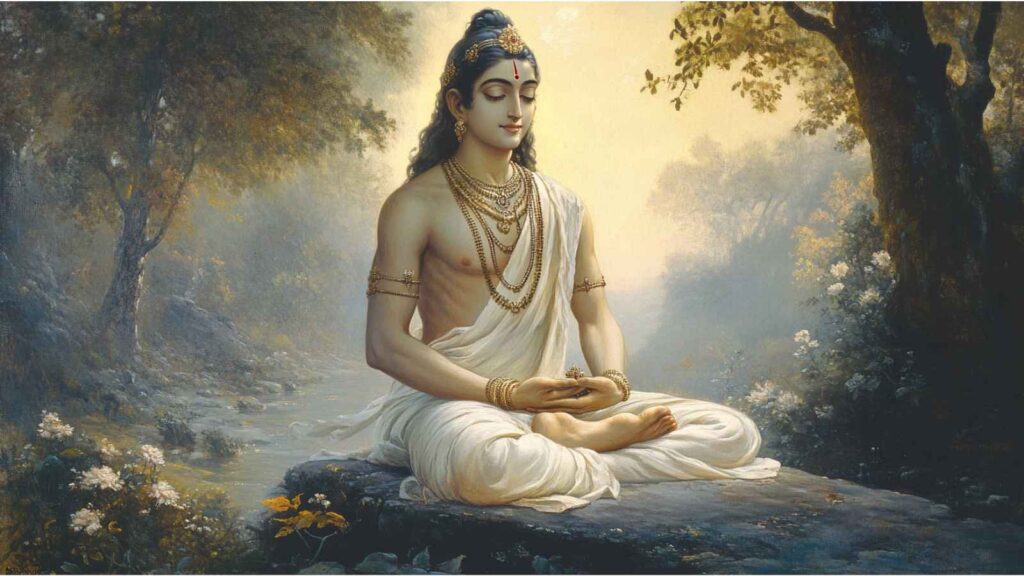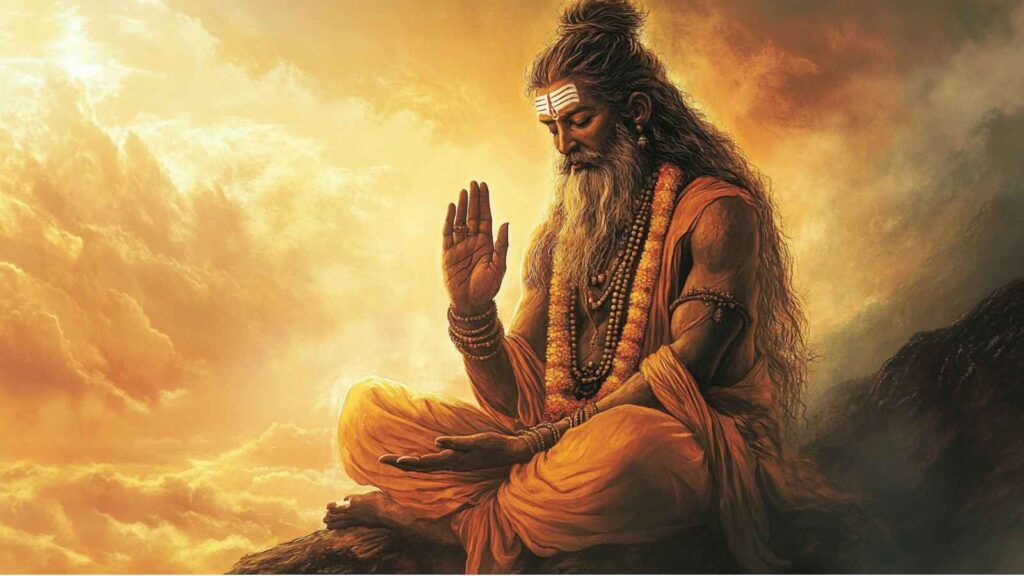The Concept of Brahman in the Upanishadic Tradition: Ultimate Reality Explained
The Upanishads, the foundational scriptures of Hindu philosophy, delve deep into the nature of reality, consciousness, and the self. One of the central concepts discussed in these texts is Brahman—the ultimate, formless reality that is the source of all existence. In the Upanishadic tradition, Brahman is not merely an abstract idea but the very fabric of the universe, transcending all that we perceive through our senses. Understanding Brahman and its role in the cosmos is essential for grasping the essence of Hindu philosophy, particularly in the quest for self-realization and liberation.
In this article, we will explore the concept of Brahman as explained in the Upanishads, examining its attributes, symbolism, and philosophical significance. We will also delve into how Brahman connects the individual self (Atman) with the universal consciousness, and how this understanding is the key to achieving spiritual enlightenment.
Read More About sacred texts
Introduction to Brahman in the Upanishads

The Upanishads are a collection of ancient texts that form the philosophical backbone of Hinduism. They primarily deal with the nature of the self (Atman), the ultimate reality (Brahman), and the relationship between them. While the Vedas focus more on rituals and hymns to the gods, the Upanishads shift the focus toward internal inquiry, meditation, and the quest for spiritual truth.
Brahman is the central philosophical concept in the Upanishads. It is the unchanging, infinite, and transcendent reality that is the source of everything in the universe. Atman, or the individual soul, is understood in the Upanishads to be a reflection of Brahman, and the realization that Atman and Brahman are one is considered the highest truth in Hindu philosophy.
Defining Brahman
Brahman is described as Nirguna (without attributes) and Saguna (with attributes) in the Upanishadic tradition. These two aspects provide a comprehensive understanding of Brahman:
- Nirguna Brahman refers to the aspect of Brahman that is beyond all human attributes, qualities, and perceptions. It is formless, transcendental, and beyond the grasp of the human mind.
- Saguna Brahman, on the other hand, refers to Brahman as manifest in the world, with attributes such as compassion, creativity, omniscience, and omnipotence. It is through Saguna Brahman that the divine interacts with the material world and is worshipped by devotees.
The Upanishads often emphasize that while Brahman is formless and beyond the reach of intellectual comprehension, it is also present in everything that exists, making it both immanent and transcendent.
Key Teachings of the Upanishads on Brahman

The Upanishads present several important teachings on Brahman, and they articulate how Brahman connects the individual self (Atman) with the universal consciousness. Let’s explore these key teachings.
1. Brahman as the Ultimate Reality
In the Upanishads, Brahman is often described as the ultimate reality, the source of everything in the universe. The Isha Upanishad begins with the verse:
“Isha vasyam idam sarvam”
(“All this is pervaded by the divine.”)
This suggests that Brahman is immanent in all things. It is the underlying reality that sustains all creation, from the smallest particle to the vastest expanse of the cosmos. Everything in the universe—whether physical or metaphysical—is seen as a manifestation of Brahman.
The Taittiriya Upanishad explains Brahman as the source of creation, preservation, and destruction, signifying the cyclical nature of the cosmos. Everything that exists is but an expression of this ultimate reality.
2. Brahman and Atman: The Oneness of Self and Ultimate Reality
One of the most profound teachings of the Upanishads is the oneness of Atman (the individual soul) and Brahman (the universal soul). The famous phrase “Tat Tvam Asi” (That Thou Art) from the Chandogya Upanishad captures this idea. This phrase tells us that the individual self (Atman) is not separate from the universal consciousness (Brahman). Atman is Brahman, and realizing this truth is the essence of self-realization.
The Mandukya Upanishad succinctly states:
“Aham Brahmasmi”
(“I am Brahman”)
This realization leads to the understanding that all distinctions between the self and the world are ultimately illusory (Maya). The Atman is eternal and unchanging, while the physical body and the material world are transient.
3. Brahman as the Source of Consciousness
The Mandukya Upanishad also highlights the importance of Brahman in relation to consciousness. It introduces the four states of consciousness (waking, dreaming, deep sleep, and Turiya—the transcendental state), all of which are manifestations of Brahman.
- Brahman as Consciousness: In the Upanishadic view, consciousness is not limited to the individual mind. Brahman is the ultimate consciousness that pervades everything. This consciousness transcends individual experiences and is the source of all states of being. Understanding this universal consciousness is the path to self-realization.
The Brihadaranyaka Upanishad teaches that Brahman is the “inner controller” (antaryami) of all beings, guiding their thoughts, actions, and experiences. This emphasizes that consciousness is not merely an individual phenomenon, but the very essence of the universe itself.
4. Brahman as Sat-Chit-Ananda: Being, Consciousness, Bliss
The Taittiriya Upanishad presents the famous description of Brahman as Sat-Chit-Ananda—Being, Consciousness, and Bliss. This encapsulates the essential nature of Brahman:
- Sat (Being): Brahman is existence itself, the very foundation of all being.
- Chit (Consciousness): Brahman is pure consciousness, beyond the physical realm and beyond individual minds.
- Ananda (Bliss): Brahman is also the source of bliss and happiness, signifying that the ultimate reality is not just transcendent but also full of bliss, harmony, and perfection.
These three qualities are considered inseparable from Brahman and represent the fullness of the divine nature that underlies the universe.
5. Brahman as the Inaccessible and Immanent
While Brahman is the ultimate reality that transcends all things, it is also immanent in the world. The Aitareya Upanishad describes Brahman as both the inner essence of everything and the eternal, unchanging reality behind all appearances. The Katha Upanishad similarly depicts Brahman as the formless essence, which can only be realized through true knowledge.
However, the realization of Brahman is not easy—it requires spiritual discipline, meditation, and guidance from a realized teacher (Guru). The Brihadaranyaka Upanishad teaches that Brahman is not easily understood by the ordinary mind, as it exists beyond the grasp of sensory perception and logical thought.
The Significance of Brahman in Hindu Spirituality
Understanding Brahman is essential for achieving moksha (liberation) in Hinduism. The concept of Brahman provides the philosophical foundation for many spiritual practices, including:
- Meditation (Dhyana): By meditating on the nature of Brahman, the practitioner moves closer to the realization that their true self is not separate from the universal consciousness.
- Mantras: Chanting sacred sounds like AUM helps attune the practitioner to the vibrational essence of Brahman.
- Yoga: Jnana Yoga (the path of knowledge) encourages self-inquiry and contemplation of Brahman to uncover the truth of existence.
- Bhakti: Devotional practices also recognize Brahman in the form of various deities, seeing each deity as a manifestation of the one Supreme.
Conclusion: Brahman as the Essence of Existence
The concept of Brahman in the Upanishads offers profound insights into the nature of reality and the self. Brahman is the ultimate reality—Nirguna and Saguna, formless and with form, transcendent and immanent. It is both the source and the substance of the universe, and understanding it leads to the realization that the individual soul (Atman) and the universe are one and the same.
As Hinduism’s most essential metaphysical concept, Brahman continues to be a source of contemplation, meditation, and spiritual realization. Through the study of the Upanishads, one comes to understand that Brahman is not just a philosophical idea but the very essence of life, consciousness, and bliss.
The Upanishadic vision of Brahman remains timeless, offering deep wisdom for spiritual seekers and philosophers alike. Whether one seeks Brahman through the paths of Jnana, Bhakti, or Karma Yoga, the ultimate goal remains the realization of the oneness of Atman and Brahman, leading to liberation from the cycle of birth and death.


